At one time St Andrew's Great Ryburgh, as a result of George Tatham's 1860's restoration, boasted 14 windows, all designed and glazed by the Newcastle born William Wailes. Today we are left with 12 complete, one lost completely and the other "restored" out of recognition in the fashion of the 1960s.
If we start with the missing one. We have Kelly's Directory 1879 description of "a beautiful stained east window, representing the different titles of our Lord, added in 1863" and a pre-Comper restoration postcard depiction and the knowledge that an entire stained glass window was found in the basement of the Rectory when it was sold and disappeared without trace before the then churchwarden could do anything about it :
1.

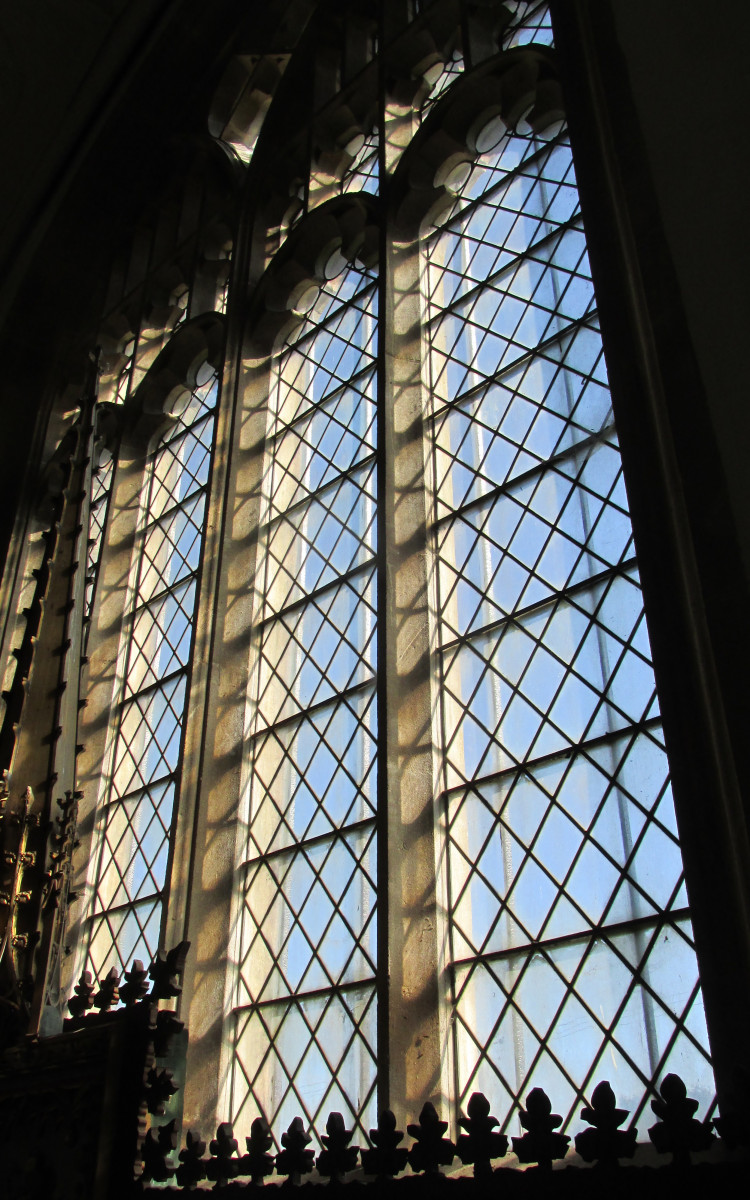
*********
The first of the restorations, that of the South window of the South Transept dated 1870 and the image of St. Andrew himself. We can only debate with hindsight the merits of light over preservation of the status quo, clarity or vandalism?
2.


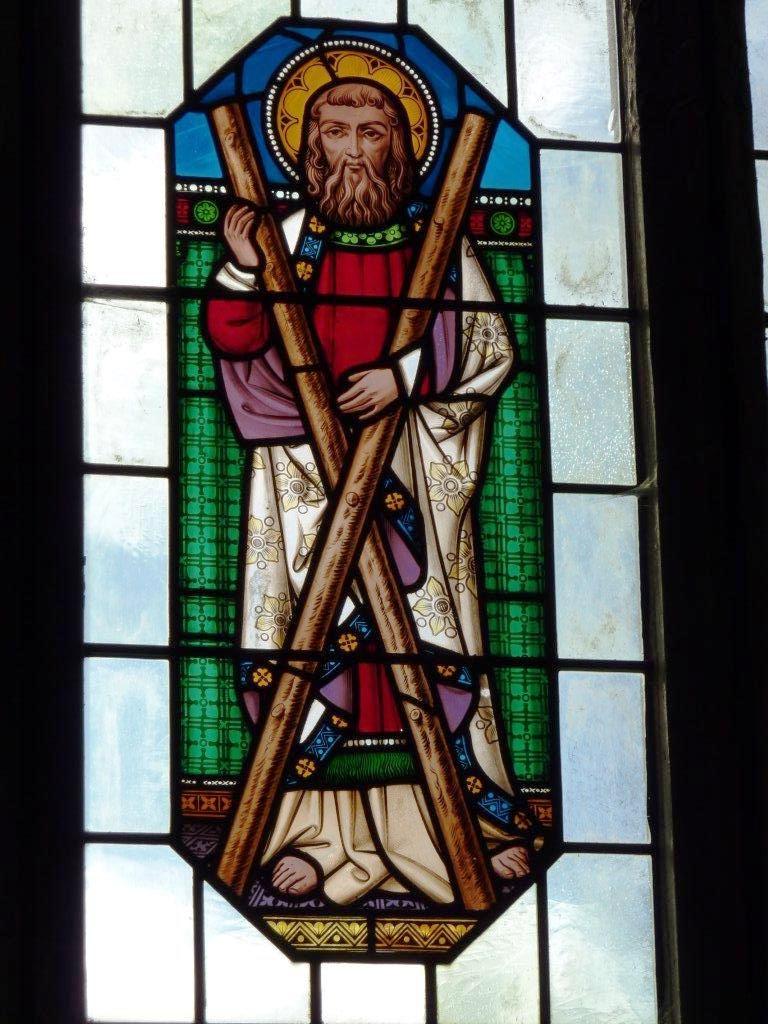
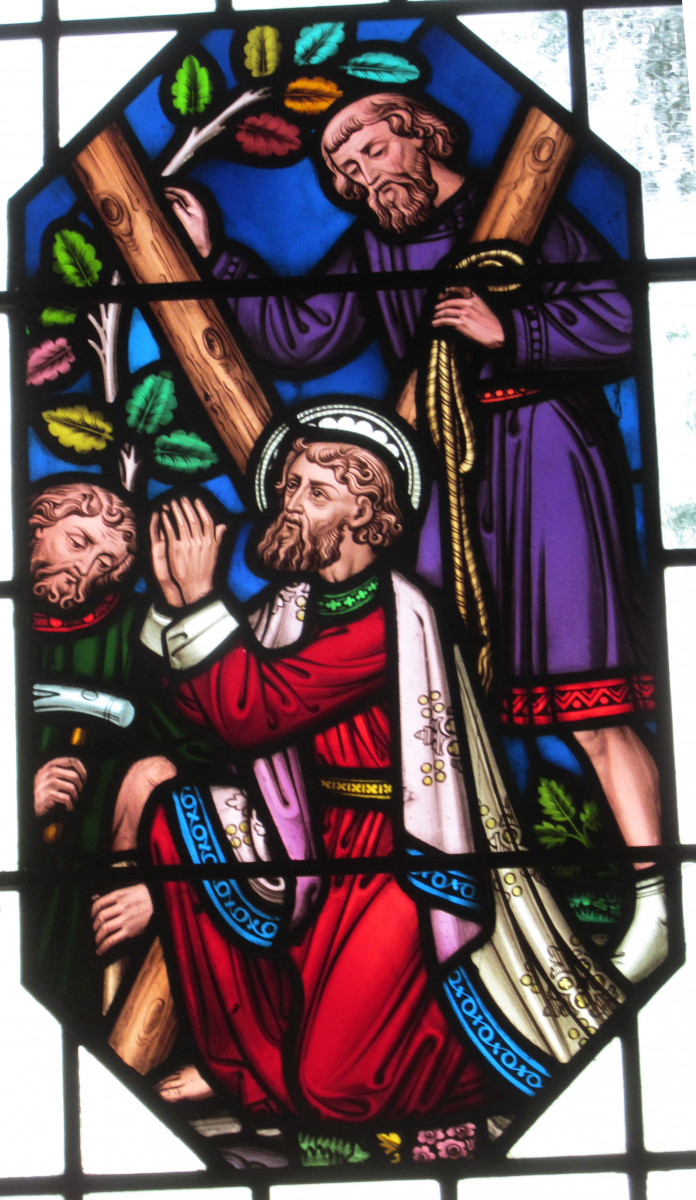
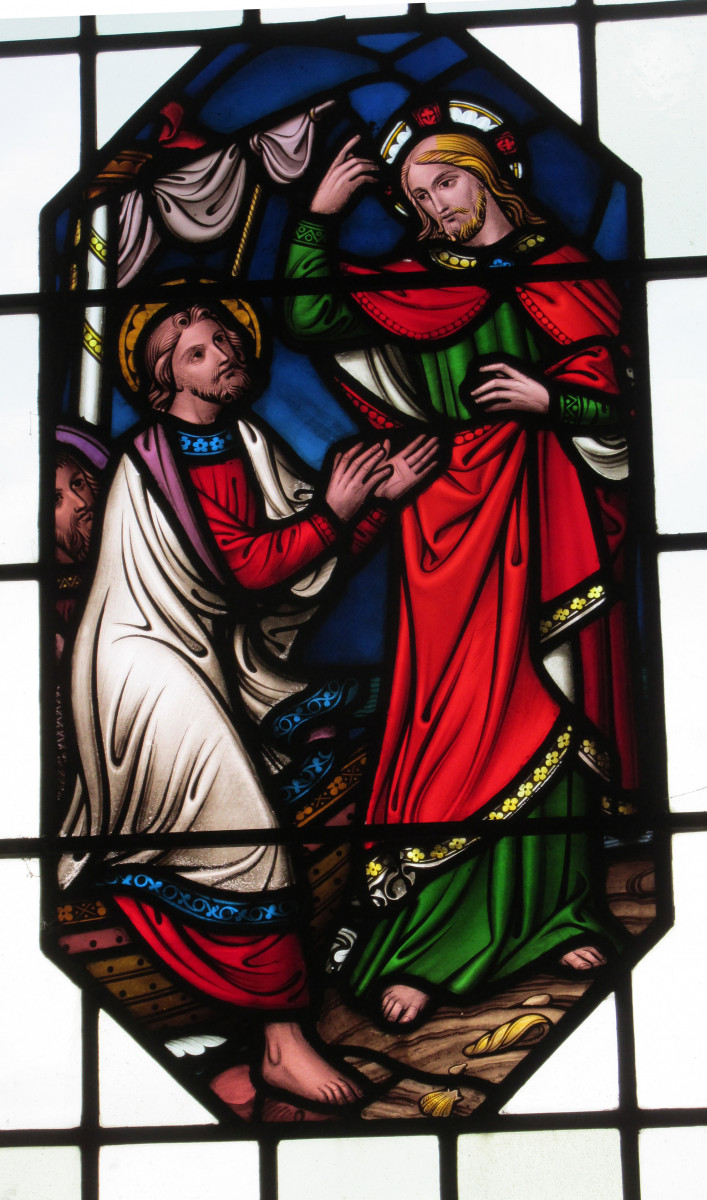
Modern inscriptions


There is one seemingly anomalous piece of glass that is to be found in the St. Andrew window. The glaziers supplied the clear rectangular panes and the inscriptions but did they also add this little curiosity which at first sight does not appear to have been part of the original window? The answer is to be found on the Think and Thank screen, where the furthermost west armourial is described by F.H. Tatham in his short historyas that of:
"Meaburn Tatham - Gyronny of six argent and azure, three martlets counter changed."
i.e. 6 triangles of silver and blue, with 3 birds resembling swallows with thighs but no legs on alternate triangles
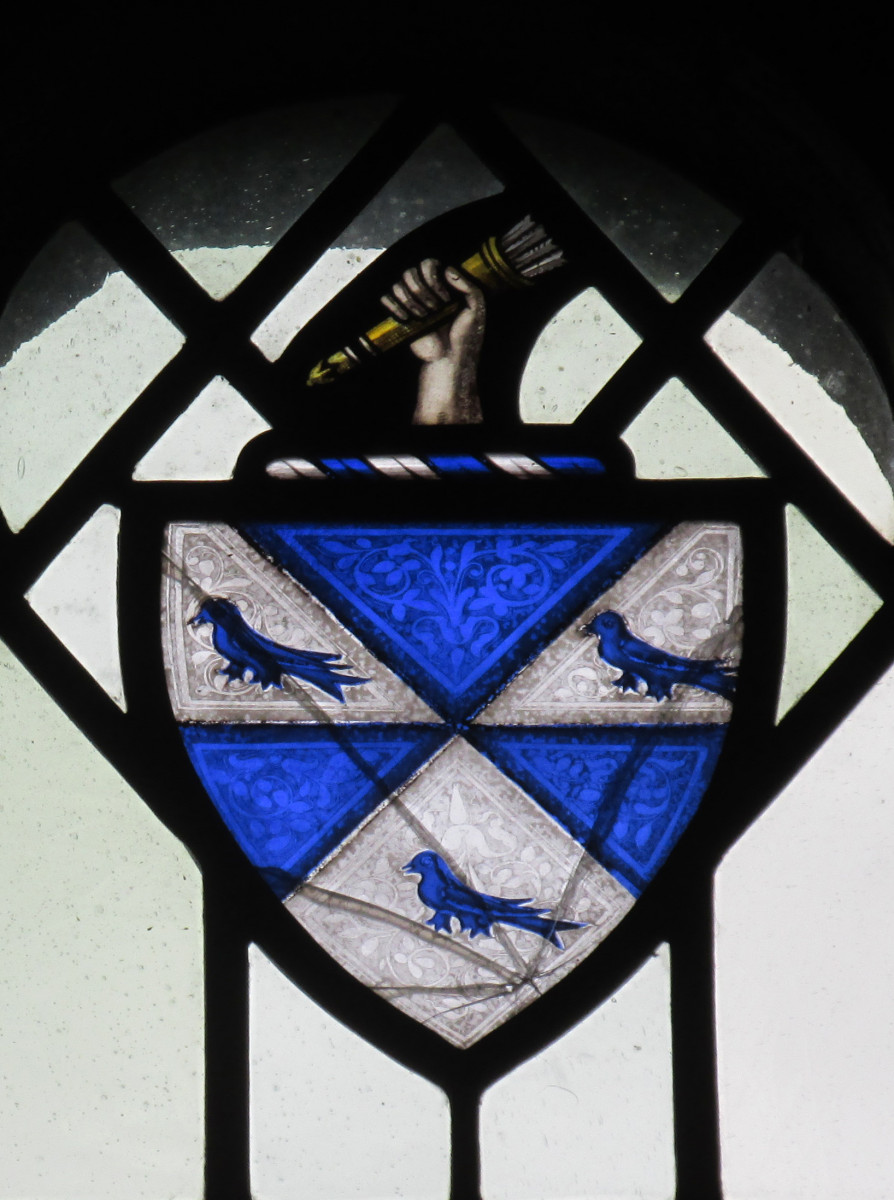
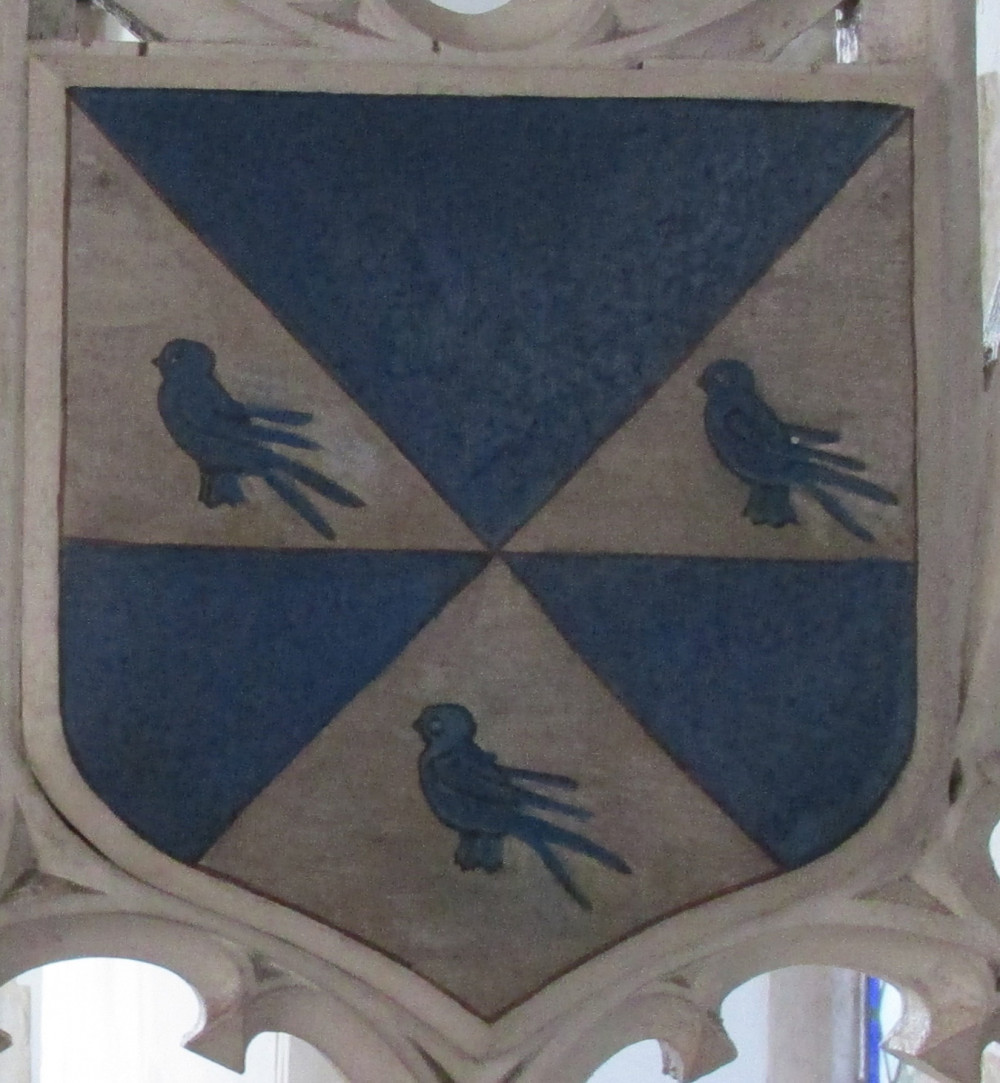
A further look at the stonework of the window shows that the only place that shape fitted naturally was at the apex, which on the photograph of the original window is too obscure to see in any detail. We'll never surely know, but it is at least most likely to have been from William Wailes' workshop.
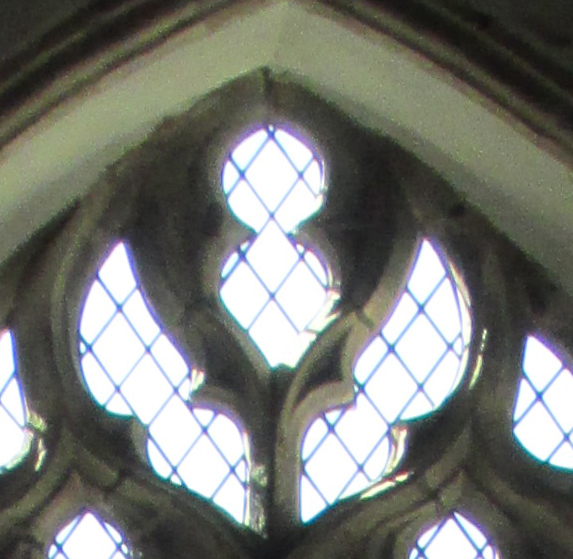
*********
The two remaining East facing windows of the South transept were a memorial to Frederick Edgar Smith who died in 1881 and date from the later years of the Ryburgh glass. His brother George's memorial windows were placed in the former Norman arched windows of the North transept in 1882:
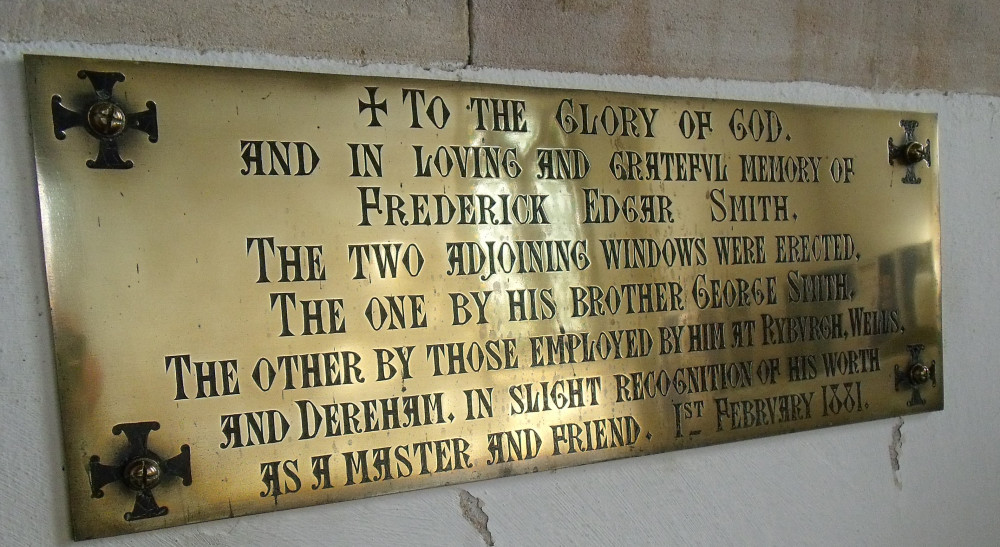
3.

4.

********
The remaining west facing windows of the South transept are plain. Do they represent the glazing plan to be found in all the windows prior to the installation of their decorative examples?
5.

6.
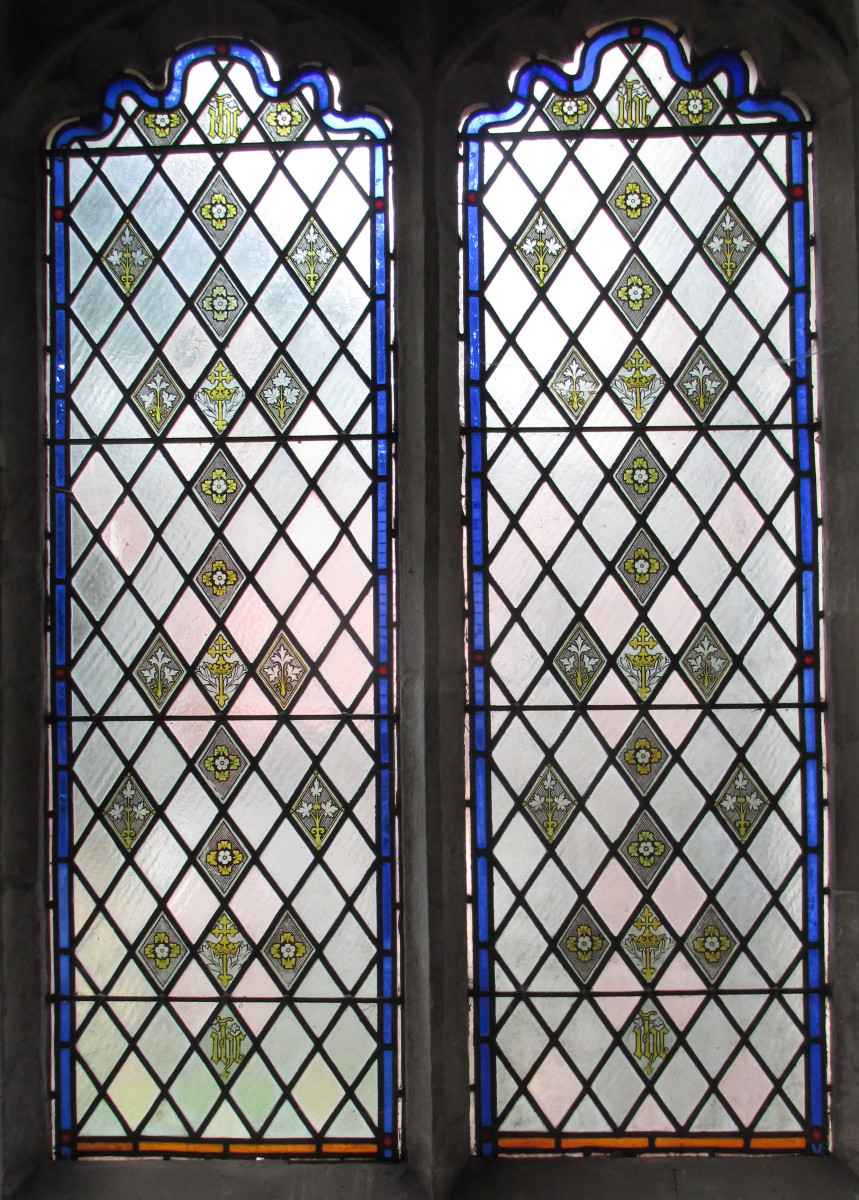
*******
Moving into the Nave we come to the most recently restored example in the east South wall . The window, depicting St. John was in memory of Edward Tolver-Gwyn of Pensthorpe and dates from 1866. The complete cleaning and repair of the window, carried out by Neil Forkes of Griffin Glass in 2010, was in memory of the the late Michael Savory of Highfield Farm.
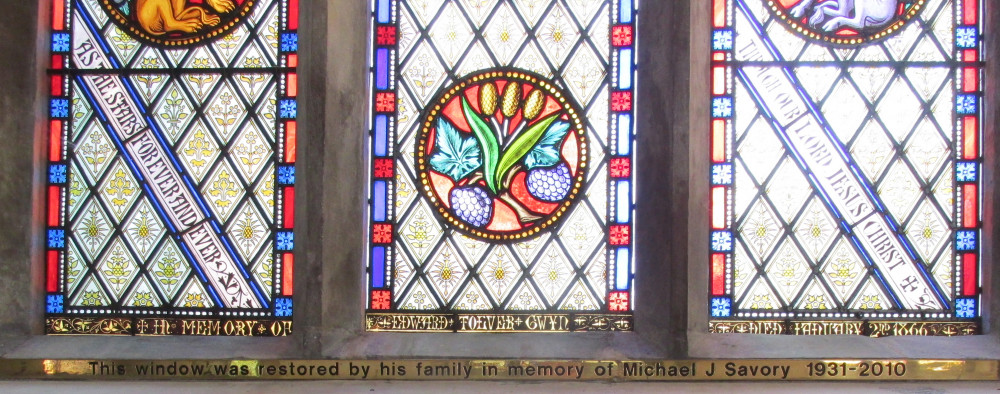
7.

*********
The other window in the South Nave wall adjacent to the gallery and depicting St. Luke was dedicated to Elizabeth, the wife of the Patron of St Andrew's, Meaburn Tatham in 1872. This window was restored in 2022 to commemorate the Platinum Jubilee of our late Queen Elizabeth II. The restored window was returned to the church shortly after the death of the Soveriegn making it a doubly significant celebration of her life and service to the nation
8.

**********
Crossing the Nave opposite the window above, we find one of two windows that are memorials to the Patron, Meaburn Tatham, who died in 1875 and depicting St Mark.
9.

The other window to the east depicts St. Matthew.
10.

The North transept has the two windows dedicated to George Smith in 1882 and which occupy the two east facing openings that prior to that were of Norman origin, as can be seen in the 1832 print of the church made by J.B. Ladbrooke:

11.

12.

Going east into the Chancel we find two more Tatham memorials on the North wall. The first is in memory of Meaburn Smith Tatham, the Revd George Tatham's older brother who died in 1870.
13.
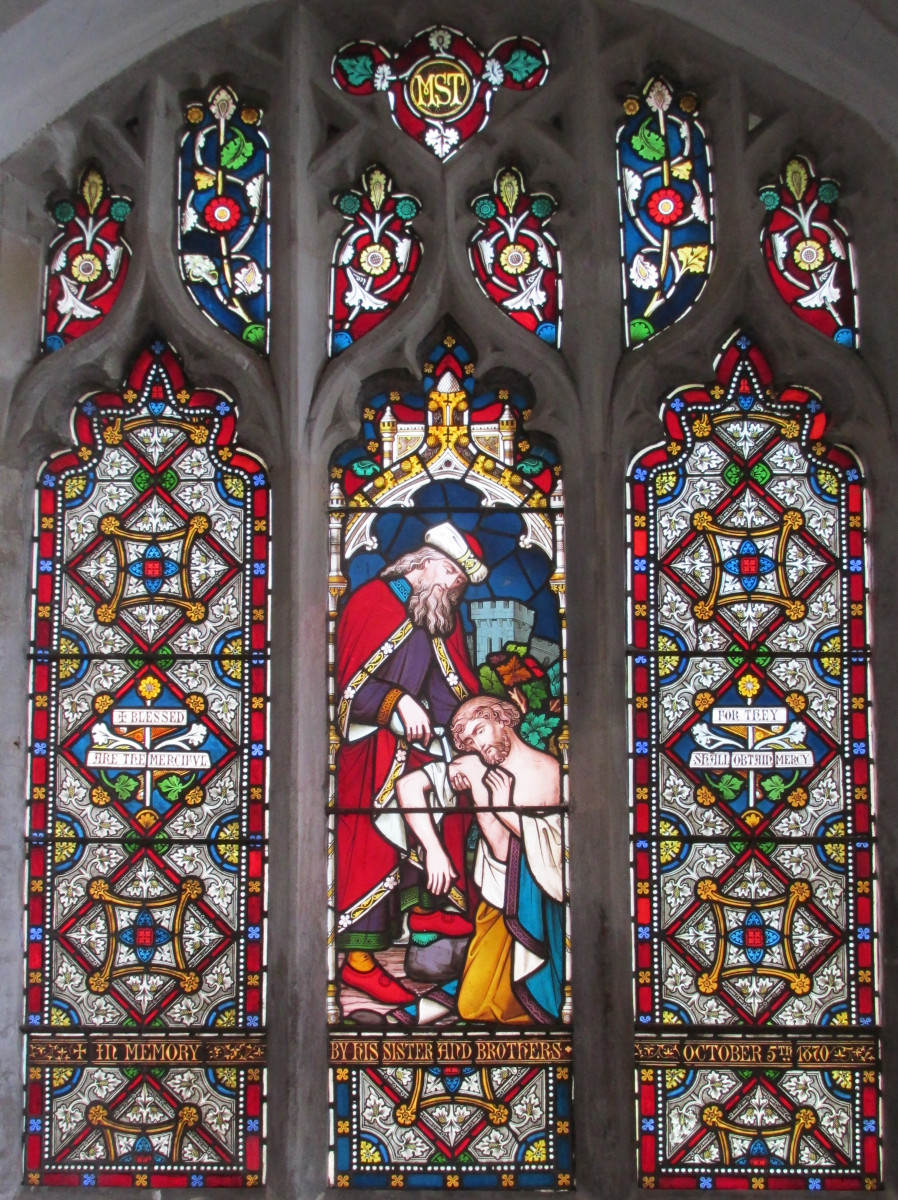
The second window commemorates the Revd.George and Betha Tatham's 2 year old son Meaburn who died on March 4th 1876. He is buried outside the south door of the Chancel. His younger brother Frederick Hugh was buried close by a lifetime later in 1947.
14.

Crossing to the South wall of the Chancel is the 3rd of our restored windows and a restoration in 1970 that caused much upset in the Tatham family at the time. It had been their hope to have more light enter by means of a similar treatment to that carried out in the South transept. Attitudes however had changed in the intervening 7 years and preservation was the order of the day, much to the disappointment of F.H.Tatham's widow, Helen. The window was in memory of Marian Elizabeth Tatham, George and Betha's eldest daughter who died on Easter Day 1870 whilst visiting her grandparents.
15.

To complete the set is the memorial to Parthenia Block who died in 1870 She was Marian Elizabeth's Grandmother, i.e. Betha Tatham' s mother. By 2014 this window was in most urgent need of restoration so a fund was started for the restoration of the window as a memorial to all the WW1 families of Ryburgh brought to light by the ongoing Think and Thank/Ryburgh Remembers project.
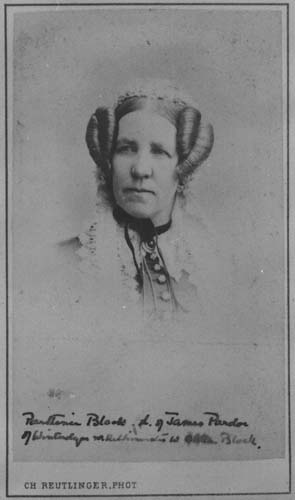
Parthenia Block
16.
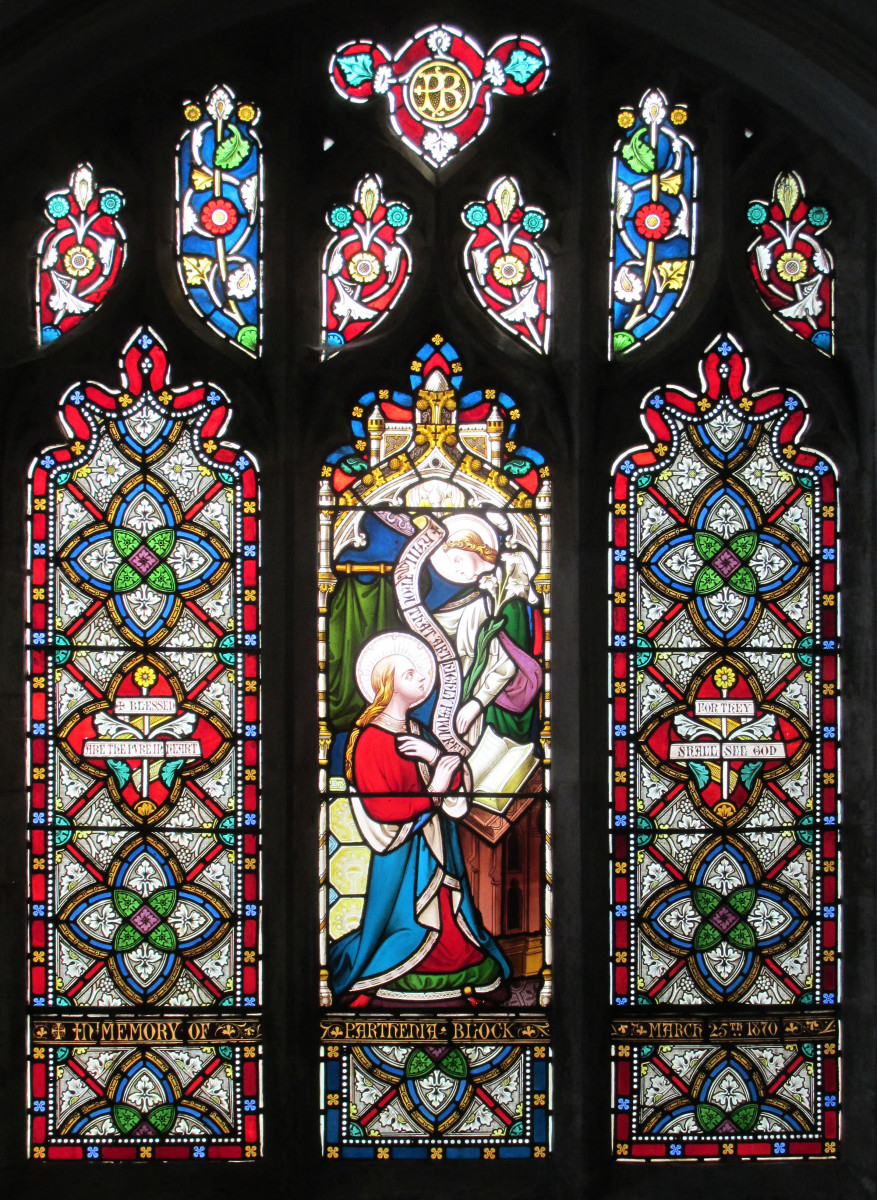
From within, the window looked in very much the same condition as the others but externally the extent of buckled and brittle lead work was rather more apparent and had already caused cracks to the glass:
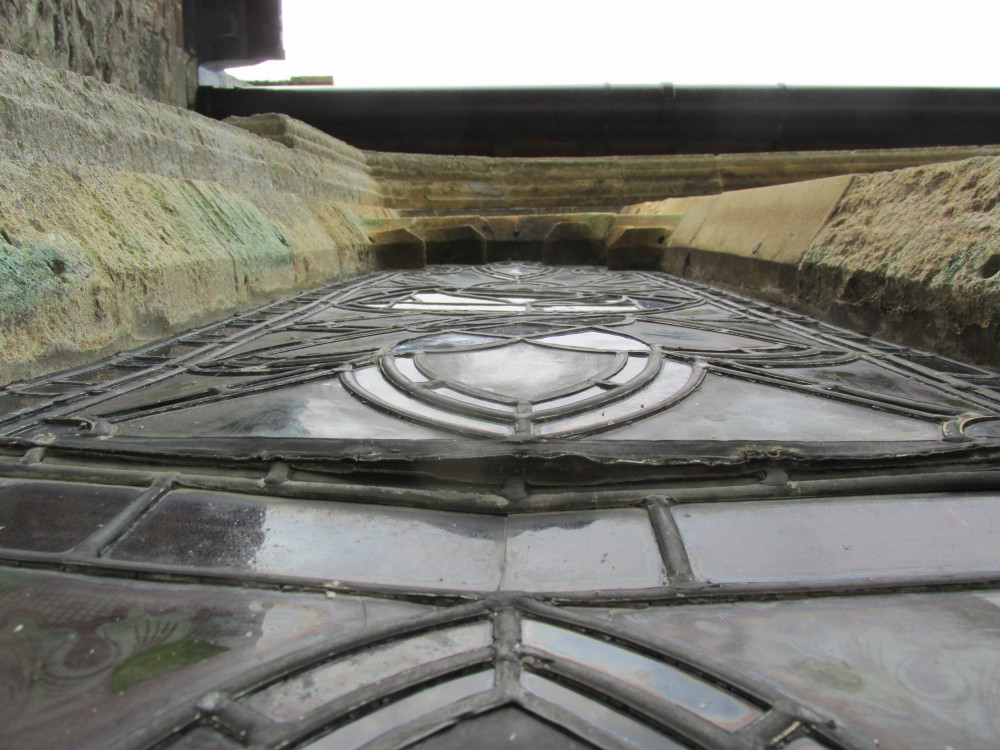

The window was removed for restoration and returned during the Covid lock-down period and consequently was finally dedicated on Remembrance Sunday 2021. It now looks splendid and as good as new. The brass dedicatory plate below the window reads:

"This window was restored to mark 100 years since the end of World War 1"
The restoration was made possible by the generous donations of a number of private individuals and with funds granted from both the The Round Tower Churches Society and the Norfolk Churches Trust. To all these people we are much indebted and thankful.
During the period of Remembrance, prior to Advent, the window will be flanked additionally by the Standards of the Mens' and Womens' Sections of the now disbanded Ryburgh Branch of the British Legion. St Andrews' is proud to have custody of the Legion Standards for what otherwise could have been an uncertain future.

photo by Stuart Bowell of The Round Tower Churches Society